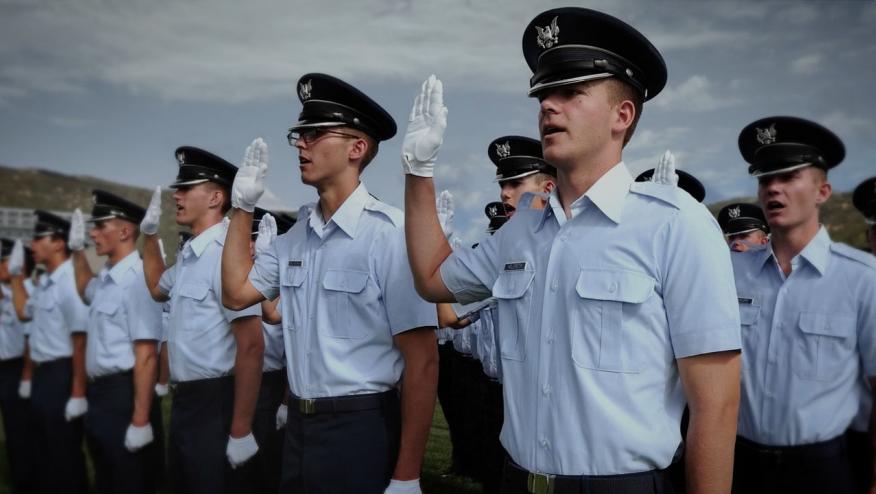U.S. Air Force - Basic Measures in Basic Training to Avoid COVID-19 Save

In the current issue of MMWR, the CDC reports that among military personnel starting basic training, the use of nonpharmaceutical interventions (NPI) may significantly reduce the risk of COVID-19 infection. NPIs advocated include screening measures, testing, administrative measures, quarantine, isolation, and source control, all as efforts to limit transmission COVID-19 in the community.
This report looks at NPI implementation in the first 7 weeks (March 1–April 18) of basic military training (BMT) at a U.S. Air Force base. From a population of 10,579 trainees, COVID-19 incidence was limited to five cases (47 per 100,000 persons), three of which were in persons who were contacts of the first patient.
Transmission of symptomatic COVID-19 was successfully limited using strategies of quarantine, social distancing, early screening of trainees, rapid isolation of persons with suspected cases, and monitored reentry into training for trainees with positive test results after resolution of symptoms.
Using CDC guidelines, trainees who reported ill were evaluated by to the medical officer on duty. Testing for SARS-CoV-2 was indicaed if they reported both symptoms (including cough, fever, or shortness of breath) and an exposure (someone known to have COVID-19 or travel from a high-transmission area). After March 16, testing was entirely symptom based.
Using these criteria, from March 1 to March 15, two patients were tested for COVID-19. Beginning March 17, all new recruits were segregated upon arrival for a 2-week arrival quarantine on an area of the base separated from the main cohort of trainees. In addition, all trainees were instructed to maintain a distance of at least 6 feet between one another to ensure social distancing.
On April 6, universal use of cloth face coverings was introduced.
Symptomatic recruits could return to training at least 7 days after symptom onset and after at least 3 afebrile days.
There were 4,073 (39%) who had begun training during March 1–April 18. During that period, 345 (3%) trainees met criteria for testing and further investigation. Among these, 86 (25%) were tested during arrival quarantine, and five (1%) tested PCR-positive for SARS-CoV-2. All patients who had positive test results for SARS-CoV-2 or influenza were in arrival quarantine when tested. Public health officials conducted contact tracing for all PCR-confirmed COVID-19 cases.
Patient A arrived at BMT on March 17 and developed symptoms 5 days later, on March 22. The patient was evaluated and found positive with the SARS-CoV-2 PCR test at sick call on March 23 and was immediately isolated. Patients B, C, and D were contacts of patient A during training; they became symptomatic and were evaluated on March 25, March 27, and March 30, respectively. All three had positive test results for SARS-CoV-2. Investigators could not identify the source of infection for patient A; they speculated that he might have been infected during transit because he arrived from a state not reporting community spread of COVID-19.
All five cases occurred in men. None of the patients required hospitalization or received antimicrobials. Each was placed in isolation until he met the criteria for returning to training. No additional cases were detected during March 1–April 18.










If you are a health practitioner, you may Login/Register to comment.
Due to the nature of these comment forums, only health practitioners are allowed to comment at this time.